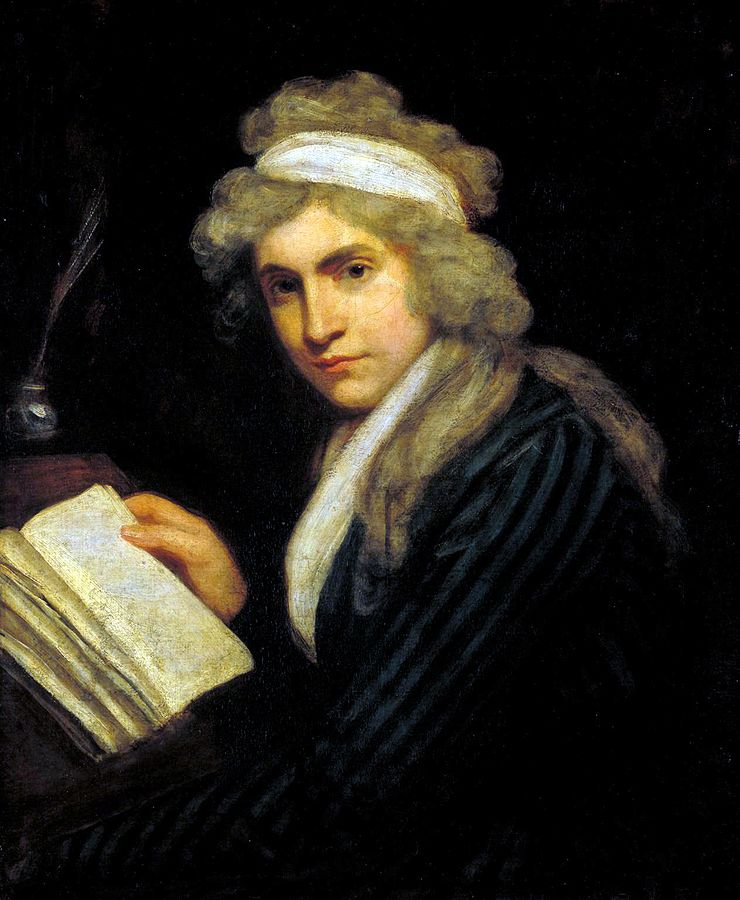Mary Wollstonecraft was a feminist, an activist, a philosopher, a mother, and an inspiration for scholars to come. Unfortunately, a story ever too common occurred to her, as it has many formidable women from history. Her ideas were scoffed at and called ludicrous during her time. This did not stop her from publishing a number of works and even establishing a school for girls.
On display in the Elizabeth A. Sackler Center for Feminist Art at the Brooklyn Museum, is a display dedicated to Mary Wollstonecraft and her most famous work, A Vindication of the Rights of Woman, 1792. Wollstonecraft lived from 1759-1797, during the era famous for its embrace of philosophy and logic, known as the Enlightenment.
The intricate installation artwork by Judy Chicago at the Brooklyn Museum, entitled The Dinner Party, with a portion to Wollstonecraft, consists of a tablecloth, a dish bowl, and a few striking tapestries. The tapestries are embellished with embroidery, mixing gold, an assortment of pinks, and a shamrock green, in order to form an intricate web of threads and hues. The dishes are decorated with similar shades as the tablecloth, but in notably more vibrant forms. The same colors embellished on both the tapestries and the dishes have different designs in the sense that the tapestries exude artistic tendencies of classical art pieces, while the dishes conform to modern art standards. Specifically, the tapestries adorn sporadically placed floral patterns which weave life into the display and add femininity to its tune, as the dishes have brush strokes that make up no real geometric shapes, or anything we see in daily life (a common concept of modern art).
This metaphor between old and modern artistic trends in the display, however while using the same colors, symbolize Mary Wollstonecraft’s greatest book, A Vindication of the Rights of Woman, specifically, how that same work is interpreted so differently now, versus when Wollstonecraft first published it during the Enlightenment. The scorn A Vindication of the Rights of Woman received during the Enlightenment contradicts with the praise it gets nowadays, as feminism in general has also experienced that same path.
The Wollstonecraft display is one part of the larger The Dinner Party, a lighthouse in the sea of feminist art, in which Judy Chicago depicts 1,038 historical, powerful, and some of them mythical, women who have “dinner places” just like Mary Wollstonecraft’s. These displays are testaments to these women’s undeniable impacts on history. Unironically and all too expected, this beautiful rendition of history’s most famous women has faced endless scrutiny from “male onlookers and critics as they fail to understand Chicago’s fundamental premise of the work.”
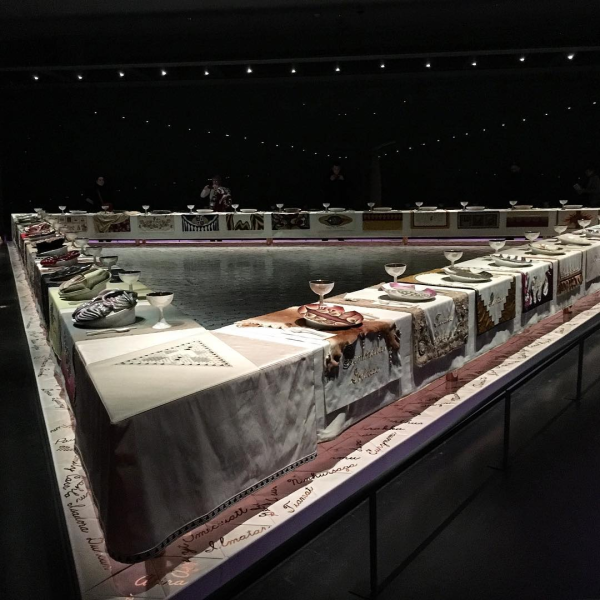
Mary Wollstonecraft and her daughter Mary Shelley, are owed a consolation from history as they were derided in their time for being women who dared to challenge the system. Although they have received credit for their works in the twenty-first century, Mary Wollstonecraft and her daughter were slighted when they were alive. Let’s not merely look at these women’s lives through a birds-eye lens, failing to capture the scope of their immense accomplishments. Rather let’s articulate our focus, and emphasize the seemingly small yet meticulous details that defined their most prominent works.
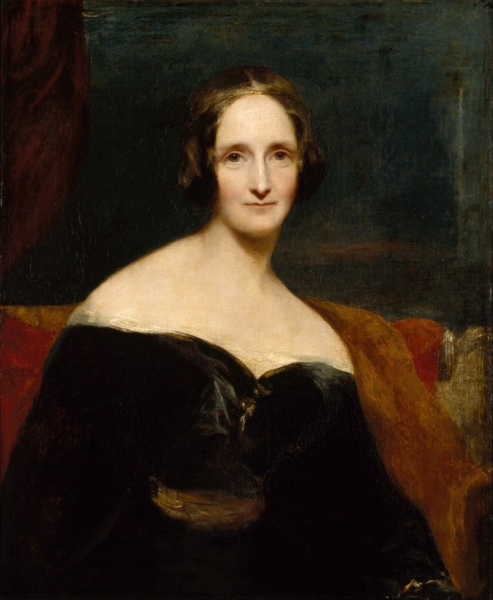
During the eighteenth and nineteenth centuries, the Enlightenment triggered an avalanche of wars and democratic revolutions. The Enlightenment was driven by French philosophes (French for philosophers). The ones most frequently renowned by the public today are “John Locke, Voltaire, Jean-Jacques Rousseau, and Montesquieu.” There is a stark absence of female names in this list, notably Mary Wollstonecraft.
During the 18th century in Europe, Jean-Jacques Rousseau was credited to be one of the greatest Enlightenment thinkers of the time. Unfortunately his writings fell short when he denounced Wollstonecraft’s teachings that women are equal to men, and as such, should be provided with the same educational opportunities.
Wollstonecraft, proving her inviolable personality, was not dissuaded by Rousseau. Instead, she leveraged Rousseau’s critical ideals of “natural rights of man” to fight for women’s education. She not only used his misogynistic arguments as a tool to further her teachings, but even ridiculed Rousseau’s misogyny in A Vindication of the Rights of Woman.
Impressively, Wollstonecraft was also self educated. As she herself experienced the unfairness of the patriarchal system, she decided to put a dent in the system, founding a school exclusively for girls with her sister Eliza and friend Fanny Blood, in London, 1784. It was here that she fought to radicalize generations of young women and teach them about the “necessary equality of female and male education.”
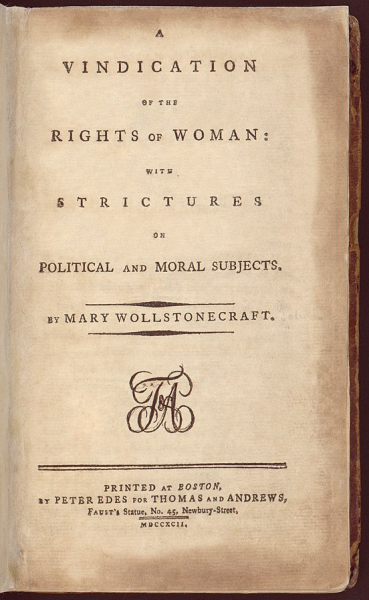
A student of this school, Mary Shelley, continuing Wollstonecraft’s legacy, created a classic called Frankenstein, published in 1816. Although this classic is loved and adored now, Shelley did not receive the same sentiments in her time. Critics of her work even went as far as to say that her husband, Percy Shelley, wrote the novel.
Mary Shelley was a gothic romanticism author. The Romanticism Era was a literary movement roughly between 1790–1850. The movement was defined by celebrating nature, the common person, and its idealization of isolation.
Just like her mother, Mary Shelley gained her fame by going against the traditional stereotypes. Even though she was a Romantic Period author, she famously found flaws in many of the pillars of Romanticism including idealization and isolation. She also used Frankenstein and other works to juxtapose the flaws of the Enlightenment to the flaws of Romanticism. In short, she did this by having her characters mirror both these eras where “Frankenstein represents the Enlightenment, and his monster represents Romanticism.”
Shelley’s works acted as the foundation for countless future texts such as Robert Louis Stevenson’s now legendary 1886 novella The Strange Case of Dr Jekyll and Mr Hyde, The Golem by Avram Davidson, and Hideous Love by Stephanie Hemphill.
These texts include much content inspired by Shelley’s writing. The Strange Case of Dr Jekyll and Mr Hyde incorporates evolutionary fears in his text that touches on the dangers of primitive behaviors and creatures in a very similar manner to Frankenstein. The Golem took a much more direct approach to mirror Shelley’s work, as the resemblance is so canny the book is often referred to as the “Hebrew Frankenstein.” Finally in Hideous Love, Hemphill focuses more on Shelley than on Frankenstein, drawing inspiration from the experience of a “troubled, young, female writer.”
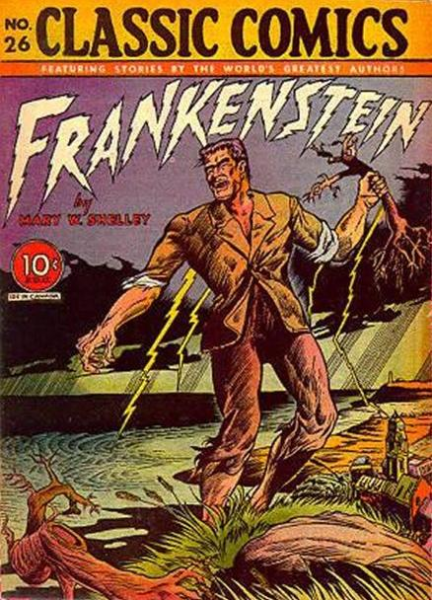
Ms. Nicole Scotto, an AP European History teacher at The Bronx High School of Science, articulates why Wollstonecraft, Shelley, and other women are acknowledged less in the grand scheme of the Enlightenment. She explains, “while there were women advocating for women’s rights during both the American and French Revolution, those ideas were not really incorporated into these new governments, which were of course dominated by men who wanted to maintain their power.”
The erasure of critical female figures extends far beyond course curriculums; it stems from their works being beyond their times, and thus ignored.
Along with the teachers, some students also reflected this phenomenon. Georgie Barth ’26 who is enrolled in AP European History at Bronx Science, said that she knew about Rousseau and other Enlightenment philosophers before starting her course, but had never heard of Mary Wollstonecraft. John Locke is taught as an expert in “natural rights,” which is why his name is so common to students, yet Mary Wollstonecraft is arguably the most notable feminist during the Enlightenment period and is less known by students.
I too have subconsciously overlooked female contributors. For example, before reading Frankenstein I did not know off the top of my head that Mary Shelley wrote it, unlike authors of other classics, such as Romeo and Juliet by Shakespeare, or Oliver Twist by Charles Dickens, which I could have attributed correctly since elementary school. Contrary to popular belief, it is not because the other two books are regarded with more fame than Frankenstein. In fact, I would argue that Frankenstein is much more widely renowned than Oliver Twist. Therefore, this conundrum has to be due to the fact that Mary Shelley is not conversed about as much in the scholarly atmosphere as compared to Dickens, Shakespeare, and many other male writers.
There were many other philosophers during the Enlightenment to advocate for the rights of women, yet what made Wollstonecraft special was her extremely liberal ideas. Ms. Scotto said, “Wollstonecraft believed that women were intellectually equal to men, and while she wasn’t the first woman to ever articulate this idea, she openly critiqued the male philosophers of the Enlightenment.” Wollstonecraft called for the reform of the national education system to accomplish this. Including A Vindication of the Rights of Woman, Wollstonecraft had written eight books by the end of her life dedicated to these ideas.
Ms. Scotto gives us another instance of a woman from history that she wishes she could teach more about. She explains, “There are so many women in history that I would love to spend more time discussing in class, but the one woman who always comes to mind is Christine de Pizan from the late Middle Ages. She was born in Italy, and her father was a physician and the court astrologer to the Holy Roman Emperor, Charles V and he taught her how to read and write. She moved to Paris to marry, but her husband died of the plague in 1389, and her father died the following year. She had three children at this point, and no man to protect her at a time when that was absolutely critical for the survival of a woman. To support herself and her children, she became a court writer and was the first professional women writer in Europe. She wrote poetry and literary works that argue some of the same ideas Mary Wollstonecraft and future feminists do, such as the education of women and the moral and intellectual equality of men and women.”
While it is possible to write a dissertation on every accomplishment that Mary Wollstonecraft and Mary Shelley had, I am ending this article about another woman who outshone her time in history and who should also be recognized. The bitter truth is that there are many women throughout history like Mary Wollstonecraft and Mary Shelley, so the best this article can do is end with Christine de Pizan, a prime example of this, for you, the reader, to further research and ponder.
Mary Wollstonecraft was a feminist, an activist, a philosopher, a mother, and an inspiration for scholars to come. Unfortunately, a story ever too common occurred to her, as it has many formidable women from history. Her ideas were scoffed at and called ludicrous during her time.

